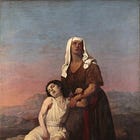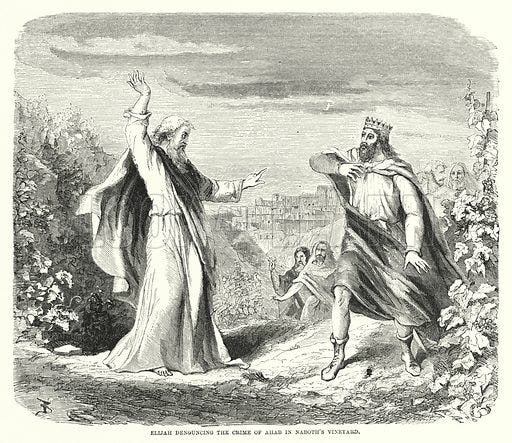A Collision Course With Life
Digital Jung Season 4, Episode 8
The latest episode of Digital Jung is now available:
Transcript:
“The strange, upheaving, lifting tendency of the taffrail breeze filling the hollows of so many sails, made the buoyant, hovering deck to feel like air beneath the feet; while still she rushed along, as if two antagonistic influences were struggling in her—one to mount direct to heaven, the other to drive yawingly to some horizontal goal. And had you watched Ahab's face that night, you would have thought that in him also two different things were warring. While his one live leg made lively echoes along the deck, every stroke of his dead limb sounded like a coffin-tap. On life and death this old man walked.”
~ Moby-Dick, Chapter 51: The Spirit-Spout
Captain Ahab, the haunted commander of the Pequod, is one of the most compelling figures in American literature. In equal measures noble and tortured, Ahab is described as bearing “a crucifixion in his face” and of displaying “all the nameless regal overbearing dignity of some mighty woe.”1
A woe so mighty, in fact, that its powerful gravitational pull will eventually draw everyone into its orbit. “Character is fate,” said the ancient philosopher Heraclitus and from the moment the story of Moby-Dick moves from the land to the sea, Ahab’s character becomes the force of fate for every soul aboard his ship.
Approaching this novel as we are, with a symbolic sensibility, the question that needs to lead us is this: what kind of archetypal energy is being expressed in the figure of Ahab? In particular, in this episode, I want to consider the nature of the archetypal situation – the inner geography, so to speak – that is indicated by Ahab’s presence as he first enters the action of the story.
Just as we saw back in Episode 2 of this season – Outcasts of the Spirit – that Ishmael, both in the name he gives himself and in his own description of his state of mind at the beginning of the novel, presents us with an image of the human experience of alienation, so here we want to get a sense of the psychological constellation of which Ahab is the embodiment.
One possibility that suggests itself is that Ahab is an instance of that well-known motif frequently found in myths and fairy tales of the Wounded King. Countless stories begin with the figure of an old king who is either wounded or sick, or even dying. It’s a common symbol that can generally be understood as an image of an old order, an old way of being, that no longer functions and is, perhaps, fading away.
The action of these stories usually involves some effort to heal or restore the old king, or it leads in some way to a renewal of the kingdom, as when the unlikeliest of the king’s sons marries the beautiful princess and ascends to the throne.
There are certainly aspects of Ahab that fit with this motif. For instance, one of the first things that we hear about him is that he is wounded. We learn that on his most recent voyage he lost his leg to a “monstrous” whale, which will later be revealed to be Moby Dick himself. In connection with this, Captain Peleg, one of the owners of the Pequod, hints at some kind of sickness that seems to affect Ahab.
“I don’t know exactly what’s the matter with him,” says Peleg, “but he keeps close inside the house; a sort of sick, and yet he don’t look so. In fact, he ain’t sick; but no, he isn’t well either.”2 (Peleg, Ch. 16, p. 73)
Another possibility we could consider is Ahab as an expression of the motif of the Evil King. There is a great deal of evidence to support this idea, the first piece of which is his own name. …
Please be sure to check out the rest of the episode. You can find it wherever you listen to your podcasts or simply by clicking this link: A Collision Course With Life.
Thanks for listening and take good care!
Chapter 28: Ahab
Chapter 16: The Ship



